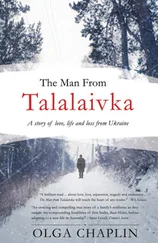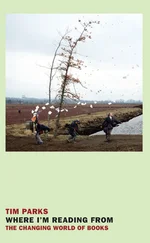25.
The View from the Terricone
In writing and speaking about the war many people talk about geopolitics, about propaganda and about Vladimir Putin. That is all fine. What is less well understood abroad are some of the social and demographic aspects that underpin the conflict. Some years ago a group of European academic institutions came together to study a series of “shrinking cities,” that is to say, places whose populations had been dropping dramatically over the last few decades. The Shrink Smart project included Liverpool, the Italian port of Genoa, Timisoara, famous as the birthplace of the Romanian revolution in 1989, Leipzig and Halle in the former East Germany and Donetsk and neighboring Makiivka.
The population of Ukraine as a whole has suffered a dramatic decline since independence. In 1993 it peaked at 52.18 million, but by 2013 it was estimated to have fallen back to 45.49 million. So, although it is a general phenomenon, the specifics of what has happened in Donetsk and Donbass do help explain some of the anger that the ideologists of separatism or of joining Russia were able to capitalize on when the war began. The work done on Donetsk in the Shrink Smart project, undertaken by Ukrainian researchers and published in 2010, also provides answers to one of the biggest pan-Ukrainian gripes. People in Donbass often say that they are fed up with subsidizing the rest of Ukraine, while those in the west and center say they are fed up with their taxes subsidizing the smokestack, rust-belt industries of Donbass. Inevitably, perhaps, the truth comes in shades of gray rather than black and white.
Donetsk, and much of the rest of Donbass, is surrounded by slag heaps from the mines. Locally they call them terrikons , which might be better transliterated as “terricones.” Some are perfect pyramids, some are hills covered in trees and shrubs and some of them rise to become strange, otherworldly plateaus. On one of Donetsk’s largest, a network of garages was built in the 1970s to anchor it down. From here, the men who frequent them and who have long used them for all manner of secretive businesses such as illegal brewing or, more recently, to hide cars in concealed garages to keep them out of the clutches of armed robbers, can watch the shelling of Donetsk from one side or look down on the neighboring city of Makiivka from the other.

Terricone slag heaps, Lysychansk, near Lugansk. May 2014.
The population of Donetsk peaked at 1.1 million in 1992 and dropped to 974,598 by 2009, a decline of 13.1 percent. Makiivka’s population plummeted by almost 21 percent, though the region as a whole did even worse, losing almost a third of its inhabitants by 2007. The main reason for this was a collapse in the birth rate coupled with high death rates. While male life expectancy had been 63.87 years in 1991, by 2008 it had dropped to 60.35 years. What this meant was that the Donetsk-Makiivka conurbation’s residents were among the oldest in Europe but paradoxically those with “the shortest lifespan on average.” The region was becoming older because fewer babies were born, the young, especially the educated, were choosing to leave and the old were dying younger.
Between 2001 and 2007 all of Ukraine went through a period of economic recovery, but it was patchy. While the economies of Donetsk and Mariupol on the coast started to strengthen, Makiivka began to be left behind. According to the report:
As late as 2007, the overall level of economic activity has not yet recovered to its 1990 level. Even after almost a decade of revival, the area remains a lower-middle income economy. Donetsk region’s gross domestic product per capita stands at only €2,000. In August 2007, the average monthly wage in the Donetsk region was €230. The protracted neglect and lack of public investment into housing, heating, transport, and environmental protection infrastructure has resulted in the degradation of urban landscape (outside the city centers) and natural environment, and the overall retrogression of the urban quality of life. Combined with seriously under-financed healthcare and educational systems, the negative consequences of economic transition only exacerbate the demographic crisis faced by Greater Donetsk and the Donbass.
In Donetsk, while mining and metallurgy remained important, their share of the economy dropped. Donetsk modernized and began to create white-collar jobs (unlike Makiivka), but as the report noted, new jobs “were in market consumer or producer services, which required from applicants… a different skill set from the traditional coal and steel vocations. Manual industrial workers and, most prominently, the unskilled and low-skilled personnel have been the main losers of the urban economic reconstruction.” In Makiivka 6,000 steel workers lost their jobs in 2008 when the Kirov Iron and Steel Works had to close because of the drop in demand due to the world financial crisis. Meanwhile, in Donetsk new apartment blocks and houses were shooting up to accommodate the new middle class while old Soviet blocks increasingly became the homes of the elderly and the poor. Drugs, AIDS and crime were big issues. Growth was driven in Donetsk by two of the biggest companies in Ukraine, one being Rinat Akhmetov’s System Capital Management, and the other being the Industrial Union of Donbas, dominated by Sergei Taruta, another fabulously rich albeit comparatively minor oligarch.
Now look at how people identify themselves. According to the 2001 census, 77.8 percent of the population in Ukraine saw themselves as Ukrainian and 17.3 percent as Russian. For the oblast or province of Donetsk those figures were 56.9 percent and 38.2 percent respectively, but for the city of Donetsk it was 46.7 percent Ukrainian and 48.2 percent Russian. With regard to the wider Donbass, however, and if you gave people the option of a regional identity, the report noted that 41 percent identified themselves as Ukrainian, 11 percent described themselves as being “Soviet” and 48 percent opted for a regional or local identity of “Donbas,” “Donetsk,” etc. Ukrainian was the mother tongue of 11.1 percent in Donetsk and similar figures prevailed in the rest of Donbass, though the number of children being educated in Ukrainian was shooting up. But these ethnic-cum-nationality issues when reflected in percentages should not be interpreted as rigid and inflexible, in the sense of people being either Ukrainian or Russian or Ukrainians speaking Russian. Simply because there were more Russians here meant that there was more intermarriage too. A survey from 1991 found that almost three-quarters of Russians here said they had close Ukrainian relatives, and in 1992 some 47.7 percent of children were born to parents of different backgrounds though their own parents were just as likely to be of mixed identities. Bearing all this in mind, and that this part of Ukraine, being Russian-speaking, watched more Russian TV and fell more within Russia’s cultural and media sphere than Ukraine’s, it is not surprising that when Putin says that Ukrainians and Russians are practically the same, here at least his words have resonance. Also, noted the Shrink Smart report, which, we should remember, was written well before the war:
The Donbas’s absence of cultural and ethno-linguistic affinity with the Ukrainian nationalist project, combined with the depth of the economic depression suffered by the region and its large industrially oriented cities in the wake of the dissolution of the USSR on 26 December 1991, have led to a creeping sense of alienation in the region… Ukrainian identity politics have eventually added to unhappiness, depression and psychological stress in the Donbas, exacerbating out-migration pressures and adding to mental health problems among most of the urban dwellers.
Читать дальше













